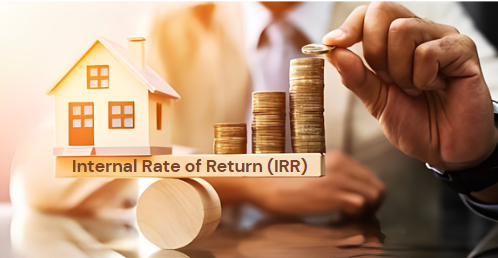Adapted from the January 2025 PREP Newsletter: "So What Does That Mean in Plain English?"
When assessing a multifamily investment opportunity, a metric which is important to analyze is the Internal Rate of Return (IRR).
Often, IRR is used interchangeably with Return on Investment (ROI) or Annualized Rate of Return (ARR), but a sophisticated investor will tell you that there’s a significant difference between IRR and these other performance metrics. (For the purpose of this writeup, ROI also refers to ARR.)
The ROI is the overall investment profits as a percentage of the initial investment. Although the IRR is calculated the same way, it also factors in the time-length of the investment - an important element.
Let’s take a look at what this looks like in formulas.
A simple way to calculate ROI = (Total Sale Proceeds - Initial Investment) / Initial investment
IRR can be calculated very similarly, but also includes time variable in the denominator.
IRR = (Total Sale Proceeds - Initial Investment) / (Initial investment x # of years held)
This IRR equation indicates that not all money returned is weighted equally in the IRR. Money returned earlier on in the investment is weighted more heavily than the same amount of money returned later on.
Here’s an example:
Scenario A
An investor invests $100,000, and after year one, the deal is sold and the investor is returned $120,000. For simplicity, let’s assume there are no distributions during the hold period.
Year 0 (Initial Investment): $100,000
Year 1 (Sale): $120,000
ROI = ($120,000 - $100,000) / $100,000 = 20%
IRR = ( $120,000 - $100,000) / ($100,000 x 1 year) = 20%
Let’s now look at the same scenario, but the sale is now in Year 4.
Scenario B
Year 0 (Initial Investment): $100,000
Year 1: X
Year 2: X
Year 3: X
Year 4 (Sale): $120,000
ROI = ($120,000 - $100,000) / $100,000 = 20%
IRR = ($120,000 - $100,000) / ($100,000 x 4 years) = 5%
In Scenario B, we see that the ROI and IRR differ drastically, and an investor might be thrilled with a 20% ROI, but dissatisfied by a 5% IRR. Furthermore, in order for the investor to achieve the same IRR as in Scenario A, the sale proceeds would have to be $180,000 - that's a substantial difference!
The IRR metric is a great way to ensure that investors are getting the appropriate return for their risk, and that the operator is incentivized to return money back to the investor faster.
At PREP, we aim to deliver to our investors an average IRR of 14% on each investment. It goes without saying that we deliver much more than just the IRR return, i.e.: monthly/quarterly distributions, investor reports, K-1s, etc., but our focus in this newsletter article is on IRR.
In a real-life investment, additional factors need to be considered, such as cash flow (and often with different amounts at different times), refinance proceeds, debt, occasional paused distributions, and fees and promotes. All of this makes the calculations much more complicated (let’s leave that to the underwriters/deal analysts), but the fundamentals illustrated above remain the same.
Written By:
Donny S. Steinberg
Director of Strategy & Innovation



